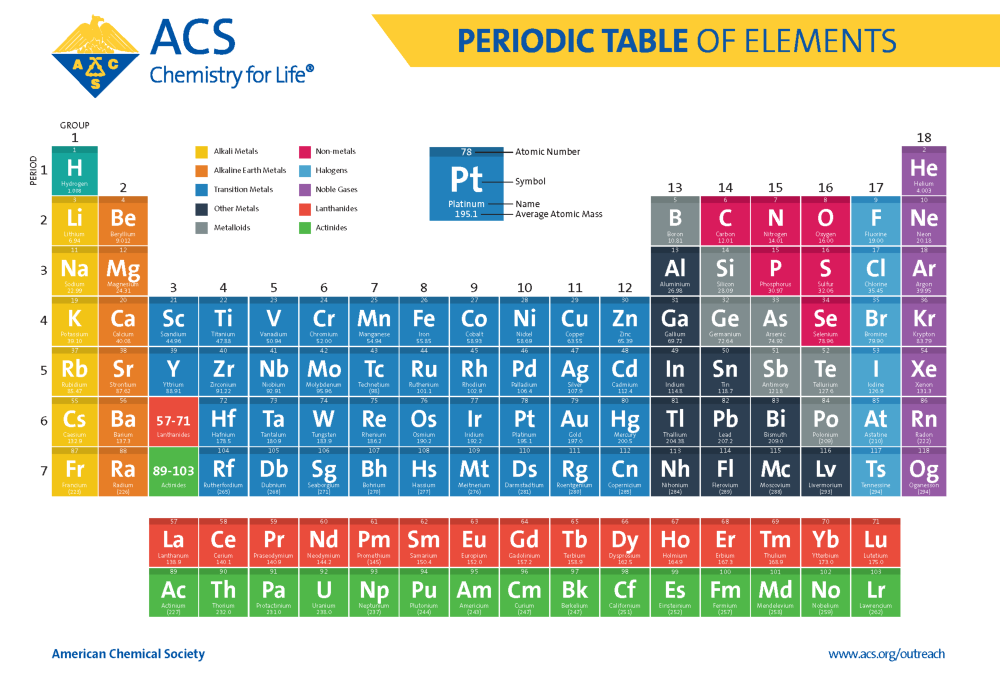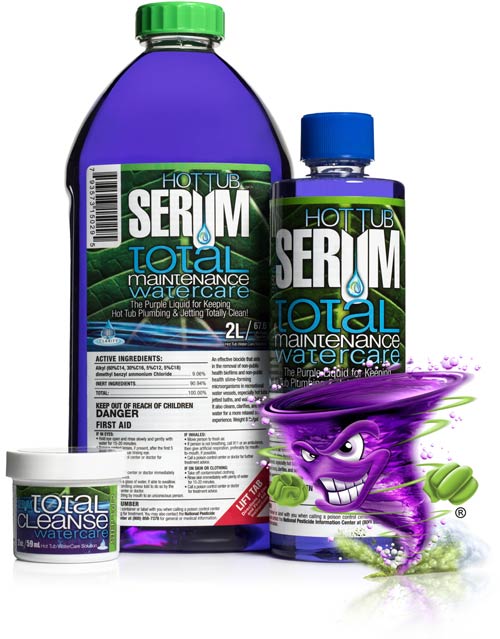A common debate among hot tub owners and dealers is Bromine vs. Chlorine – which is best as a sanitizer in your hot tub?
However, before discussing the relative merits of Bromine vs. Chlorine, let me note that ALL primary sanitizers kill ONLY free-swimming bacteria and other pathogens. They will have no impact on the biofilm developing in your spa’s plumbing and filters.
Removing biofilm in your spa is a process called “purging”. The best spa purge available is our Serum Total Cleanse. Sadly, most other purges make you think you cleaned your spa because they may leave a bit of debris on the waterline, but they do not thoroughly clean your spa’s plumbing, ridding it of biofilm. Unlike Serum Total Cleanse, these other purges do not have an agent to attack the mucous layer protecting the bacteria colony under it nor do they have an agent to kill bacteria.
I make this point because regardless of your chosen primary sanitizer, if your spa has any significant biofilm in its plumbing, you will have trouble maintaining a proper level of your primary sanitizer.
Now, let’s discuss the choice between Bromine & Chlorine.
What are Chlorine & Bromine?
Both chlorine (Cl) and bromine (Br) are unique chemical elements. Specifically, on the Periodic Table of Elements, they have the atomic numbers 17 and 35, respectively. This also means that chlorine is lighter than bromine.

Both chlorine and bromine are in the same column (2nd from right) in the Periodic Table collectively called halogens. Also in this column are iodine and fluorine, hence they are also halogens. Halogens have very similar chemical properties.
However, what we call chlorine and bromine in spas and pools are not these elements. They are instead weak acids known as hypochlorous acid (HOCl) and hypobromous acid (HOBr), respectively.
In hot tubs and spas, both acids are known as primary sanitizers. Their role is to kill and oxidize bacteria, such as E. coli & Pseudomonas, and other pathogens that may be present in spa water. These other pathogens can include viruses, such as noroviruses & Legionella (also known as Legionnaires’ disease), algae, molds, & fungus.
Chlorine
By far, the most common sanitizer used in hot tubs is chlorine, just as it is in pools. And the most common spa chlorine regimens use either dichlor or are in combination with a metal ion, usually silver ions, though some also use copper and/or zinc. Note that trichlor is commonly used in pools but should not be used in a hot tub as it may damage your spa shell.
Chlorine Advantages
The 3 primary advantages of chlorine are its inexpensive, relatively effective, and well-known.
Chlorine Disdvantages
Chlorine does have a number of disadvantages, though they are often “forgotten” in conversations regarding spa sanitation.
- Dichlor, the most common spa chlorine sanitizer, contains another chemical called cyanuric acid (CYA). In fact, it’s nearly ½ of dichlor. CYA does help extend the useful life of chlorine, but it also reduces its effectiveness in killing bacteria and other pathogens. As you continuously add dichlor to your spa, you are also increasing the level of CYA. Eventually, a condition known as “Chlorine Lock” occurs where the chlorine is no longer killing bacteria in your spa water. This is the primary reason most spas need to be drained & refilled every 3 – 4 months.
- Chlorine is very sensitive to pH. As the pH rises in your spa water, the ability of the chlorine to kill bacteria drops rapidly. Even at a pH of 7.6 (within the suggested range of 7.2 – 7.6), chlorine has lost 60% of its ability to kill bacteria.
- Chlorine is a gas at spa temperatures. Consequently, it tends to dissipate out of the spa water.
- Lastly, chlorine will combine with biologic wastes (largely ammonia) in your spa water becoming another chemical called chloramines. These are quite noxious and have no ability to kill bacteria. This is why pools using chlorine must be periodically shocked by raising the chlorine level to 3 – 5 times, at a minimum, the standard level of 2 – 4 ppm. When the chlorine level is raised this high, it breaks up the chloramines resulting in “free” chlorine.
Bromine
Less commonly used in hot tubs but with some significant benefits is bromine. Bromine is actually more effective than chlorine for the following reasons.
Bromine Advantages
- Unlike chlorine, bromine’s effectiveness in killing bacteria and other pathogens is only slightly impacted by pH.
- Also, unlike chlorine, bromamines (bromine combined with ammonia) are as effective at killing bacteria as bromine itself. They are also far less odorous than chloramines.
- As bromine is a liquid at spa temperatures it does not dissipate from spa water.
- Lastly, most people with sensitive skin will find bromine gentler than chlorine.
Bromine Disadvantages
Bromine is less commonly recommended by spa dealers though most all will carry it. Bromine is also somewhat more expensive but given the water capacity of a hot tub, this is rather inconsequential.
Which is Best in your Hot Tub: Bromine vs. Chlorine?
Though chlorine is more commonly used to sanitize hot tubs, bromine is actually the superior sanitizer for spas. The preference for chlorine is likely due to the fact it is so commonly used to sanitize pools; hence more Pool & Spa Professionals are familiar with chlorine.
By the way, bromine cannot be used in outdoor pools for sanitation. UV radiation in sunlight will rapidly destroy it. This is also true of chlorine except for this interesting fact. CYA, the cyanuric acid in dichlor (and trichlor) protect chlorine from sunlight. However, CYA does not work with bromine, only chlorine.






